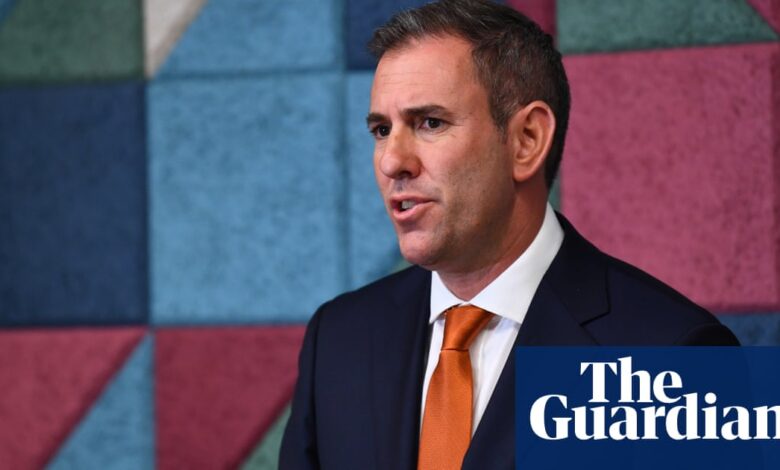Stage-three tax cut changes not modelled by Treasury or RBA before announcement | Australian economy

Neither the Treasury nor Reserve Bank modelled the inflationary effects of the Albanese government’s changes to the stage 3 tax cuts even though both agencies have told treasurer Jim Chalmers that the amendments would spur price increases.
Chalmers told ABC’s RN Breakfast on Thursday that the government had consulted RBA governor Michelle Bullock, as had treasury secretary Stephen Kennedy.
“[Bullock] has indicated to us that she does not expect what we’re proposing today to alter the Reserve Bank’s forecasts or expectations for inflation,” Chalmers said.
“I’m going to release in full the Treasury advice that we were provided in coming to this decision,” he said. “I’ve got it in front of me and it says very clearly the redesign of the stage 3 tax cuts will not add to inflationary pressures.”
However, both the RBA and the treasurer’s office have told Guardian Australia that they have not modelled the impact of the changes – which will give larger tax cuts to lower-income households that are paid for by reducing the cuts going to higher-income ones.
As reported on Wednesday, economists don’t expect the revisions to be large enough prompt the RBA to alter its interest rate plans in 2024 or beyond.
Guardian Australia understands both Treasury and the RBA determined the changes were not going to stoke pressure on prices because the total cost to the budget of the cuts was unchanged. The expected $20.7bn tax cut had been factored into models used by both organisation since it was legislated in 2019.
However, the redistribution of that cut so that those earning less than about $146,000 a year would receive a larger tax cut while those earning more would get less. Since those earning less typically spend more of any tax relief, there will be some extra demand in the economy – but just how much wasn’t modelled.
Jonathan Kearns, who was the RBA’s head of domestic markets until joining Challenger as chief economist a year ago, said it would likely “take an analyst half a day to make a back-of-the envelope” estimate about the cuts’ inflationary effect.
In Treasury’s case, the modifications could be factored into a fiscal model and also one for the wider economy, Kearns said.
“It’s obviously a political decision” for Treasury not to run the model even if the aggregate effect on prices is likely to be “pretty small”, he said.
Warren Hogan, chief economist for Judo Bank said it was “surprising” Treasury hadn’t done specific modelling for inflation.
“[It] suggests this has all happened in the past few weeks,” Hogan said. “As an experienced economists, one can do the simple arithmetic on the impacts on consumption and domestic demand pretty easily and quickly using a few plausible assumptions about propensity to consume and save at different income levels.”
If not contained in the first batch of forecasts, Hogan said the changes could be incorporated in future model runs.
The Guardian sought comment from Chalmers office. The RBA declined to comment.
It’s understood, though, that the RBA’s quarterly Statement on Monetary Policy, scheduled to be released on 6 February, will include forecasts for inflation, GDP and other metrics based on the original Stage 3 tax cuts.
Warren said that it was important that the package was “broadly revenue neutral”.
“It has positive implications for labour supply, for example, which people often don’t factor into their thinking about this question,” he said.
Kearns said it was clear that online interest in the tax cuts began picking up over January, with almost 10 times as many searches in the past week as in December.
Investors, though, don’t expect the tax changes to be significant when it comes to what the RBA decides to do with interest rates. “If the stage 3 tax cuts were expected to have a significant inflationary impetus then we’d expect to see expectations for the cash rate increase relative to those for the [US] Fed Funds rate, and there isn’t evidence of that.”





